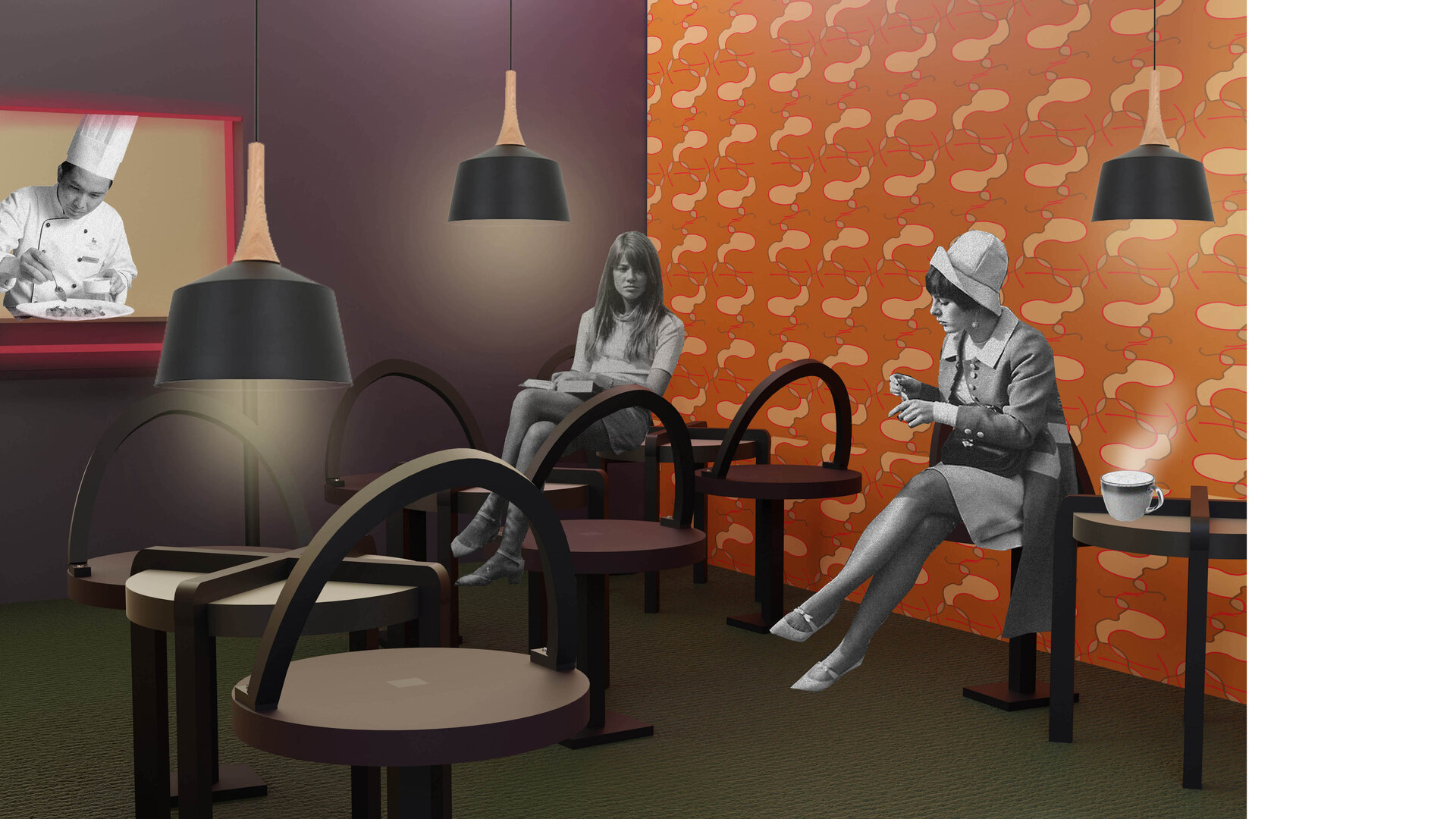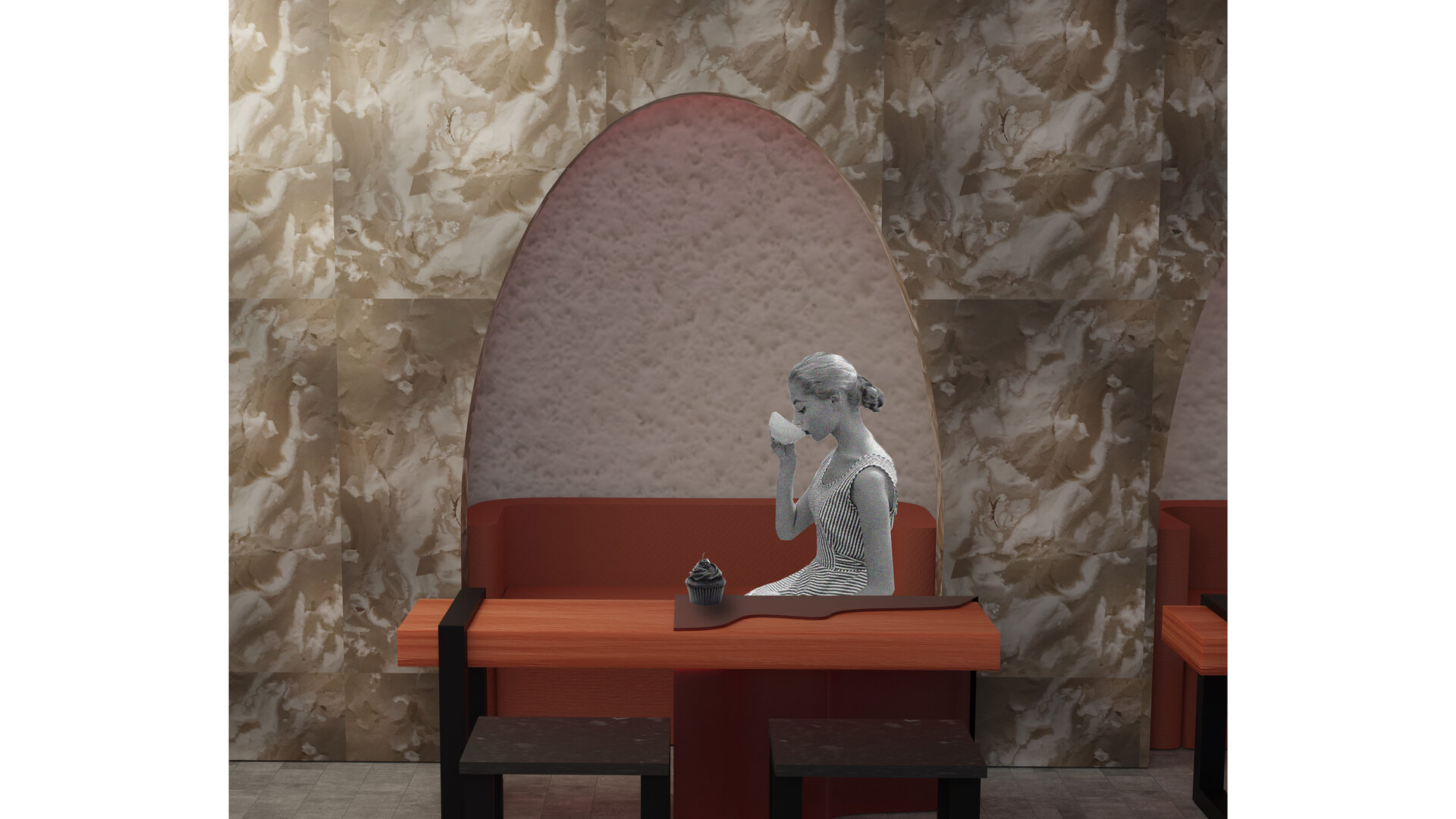
A Cinematic Textural Journey
Performance is analysed subjectively. The audience of a performance will experience it differently depending on the environment it is presented in. Fort Lane, in Auckland’s CBD, was once home to the Roxy Theatre, one the city’s earliest cinemas. This cinematic history has been compromised by modern linear architectural structures and a plethora of dining establishments. How could this historical connection to performance be re-awakened in the lane, whilst still maintaining its contemporary ambience? I propose a café and performance space in the existing Roxy building. The primary focus is on materiality and texture, and cinematic transitions for people moving through and using the café. Minor sensory moments will embody transitions, building a performative narrative that unfolds between the site and human participants.
The bar Roxy, on the site of the former Roxy Theatre, is presently open from 10 pm-4 am Wednesday to Saturday. I wanted to activate the space around the clock. My design focuses on a café space on the first floor with a performance space on the second floor for local talent. On the ground floor will be a public sit-down dining room, a calm space away from the loud urban environment. The wall surfaces and furniture in this space were prototyped in clay, exploring the visual qualities of fluidity. The coffee counter was the first piece of furniture I designed, inspired by a photo of the original Roxy milk bar from 1930. The coffee counter has a pick-up and order window to serve mobile people like delivery workers, not just those who can afford to stop and stay.
The quiet dining room embodies the focus on the cinematic element of transitions. The room is a middle ground between the upstairs performance space and the café. For this space, I designed a graphic wallpaper pattern derived from the red neon light that runs through the lane (“Eye light Lane” by Swedish artist David Svenson). A perforated partition mirrors this pattern, and is placed opposite as a reflection. This space leads on to the staircase leading to the first floor. The stair rail is designed as a performative element, an irregular line to follow up. The performance space above caters to a different audience to the lane’s night clubs — calmer and cosier.
Performative spaces are a journey. The sequence of spatial details is intended to slowly persuade and lead our thought processes as we join the dance.




